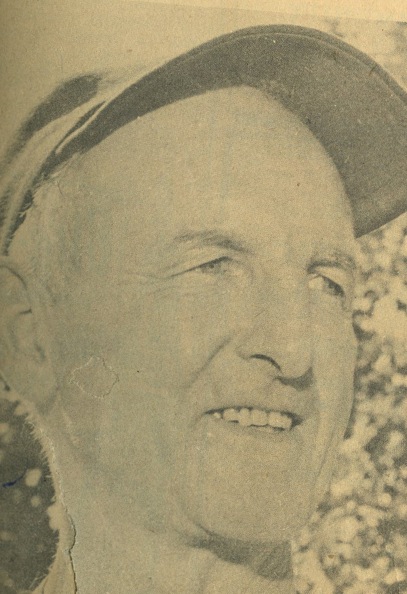The Palo Alto High School football team runs onto Hod Ray field in their sharp green and white jerseys. Almost 90 years ago a similar scene would have taken place, though with a few differances. The team would have would have sported leather helmets without masks, the gear was always mismatched and there were only 18 boys wearing Paly jerseys. Despite the cosmetic differences, the community spirit rose high. At every game, the crowds roared, with nearly the entire Palo Alto community supporting the team from the stands. On the Paly sidelines one could have make out a quiet and smiling Paly coach with a clipboard and whistle standing. The coach’s name was Hod Ray, and in the future, the field that he was standing on would be named after him.

When Ray joined the Paly Athletic Department in 1921, the principal handed him 18 new football jerseys. Ray scrapped together other old football gear from Stanford and led the team to its first championship in the Peninsula Athletic League (PAL), the division set up prior to the Central Coast Section, in its first year. This first season set the tone for the next 30 years of the Hod Ray athletics era at Paly.
Under Ray, the Vikings brought home eight PAL championships, 17 second place finishes, and three third place finishes. In ‘50 an ‘51 Ray coached impressive back-to-back perfect seasons.
Palo Alto Online, in a recent review, described Ray’s ‘51 team as “more than just formidable, [it was] downright glorious.”
Along with coaching the football team, Ray also coached the Paly basketball, track & field, swimming and baseball teams. These teams also achieved impressive successes under Ray. Between 1921 and 1946, Ray’s basketball teams posted a league record of 108-45 with 12 league championships. From 1921 to 1926, Ray led the baseball team to six PAL championships. His track & field team saw comparable success, winning four PAL titles.
“He [coached] track and baseball [in the] same season, which is pretty difficult to do,” current athletic director Earl Hansen, whose father played for Ray, said. Hansen’s father characterized Ray as firm and respected.
“When he spoke, you listened,” Pete Pederson (‘51), who was quarterback for Ray, said.
Although Ray was known around the community for his news-making teams, his persona off the field is what made him the most memorable.
“He was a real good coach, but more than that, he was a real good person,” Pederson said.
Pederson recounts an example of this when he suffered a knee injury his junior year.
“He came to the hospital to see me,” Pederson said.
This left a strong impression on young Pederson. Rays’ kindness extended beyond the athletic teams and into the Paly Community. He would even go as far as letting students live at his house.
“[Ray] usually found a kid who was not getting enough to eat and brought him home for a few days,” Frances Ray, Ray’s wife, said in an 1951 interview with the newspaper Daily Palo Alto Times.
“Sometimes it turned out to be six weeks, sometimes three years.”
Throughout World War II, Ray received hundreds of letters from his former student-athletes who were serving in the military. He believed in the youth of Palo Alto and dedicated his life to their well-being. Ray believed that he could improve kid’s lives through sports.
The Daily Palo Alto Times described Hod as having a “selfless devotion to the welfare of Palo Alto youth.”
Ray was quite the athlete himself. Throughout his high school sports career, Ray played multiple sports. He was an all-around great athlete and was offered a part-time job, the equivalent of a scholarship, to play basketball at Oregon State College (OSC). At OSC, he was a starter for all four years and won all-conference his junior and senior years. Aside from being an incredible player, he also coached the team at the same time. After this first coaching job, Ray went straight into coaching at Paly.
In 1951, Ray’s coaching career ended abruptly, when Ray died of a heart attack just three weeks after the Vikings completed their second perfect back-to-back season. His death sent shockwaves through the football team and the Palo Alto community.
“The football team, the school, the community, everyone took a step back and realized that we had lost a really fine person,” Pederson said.
At his funeral, the entire football team was introduced and a memorial plaque was placed in his honor at the newly named Hod Ray field. On the plaque there is an engraving of him with his trademark clipboard, whistle and smile. This is the plaque that Paly athletes, from sports ranging from football players to cross-country runners, walk by every day. Let it serve as a reminder of Ray’s message—keep faith in the Palo Alto youth.




Thomas R.W.Ray • May 7, 2021 at 2:44 pm
Hod Ray was my great uncle. I have heard family stories over the years about him but had no idea a field was named in his honor. Thank yall for keeping his memory alive. Thomas Ray, Mesquite , Texas